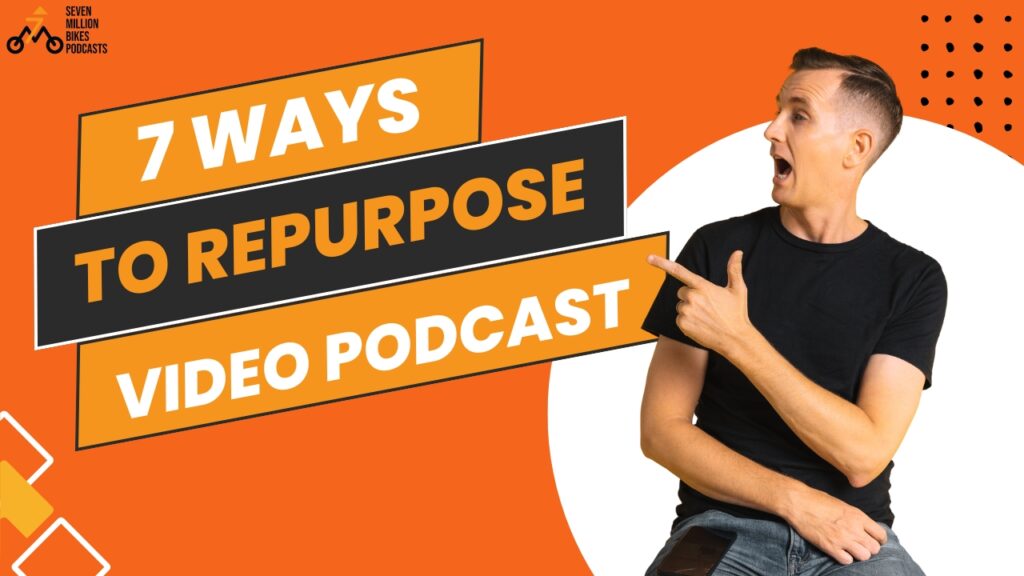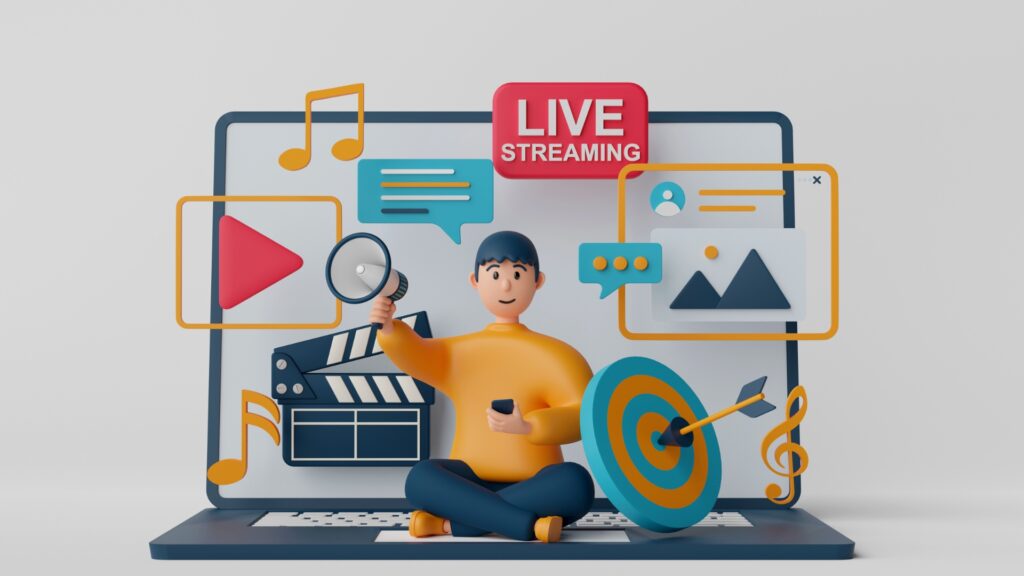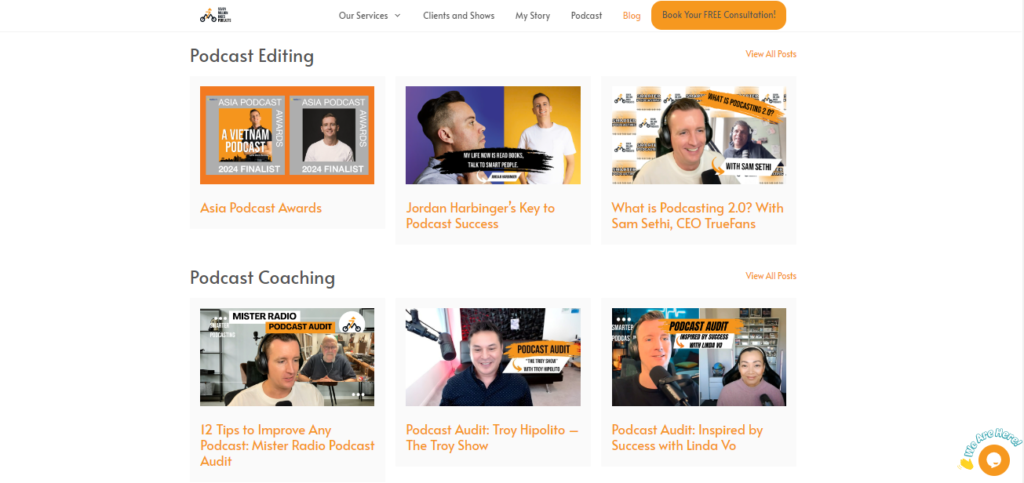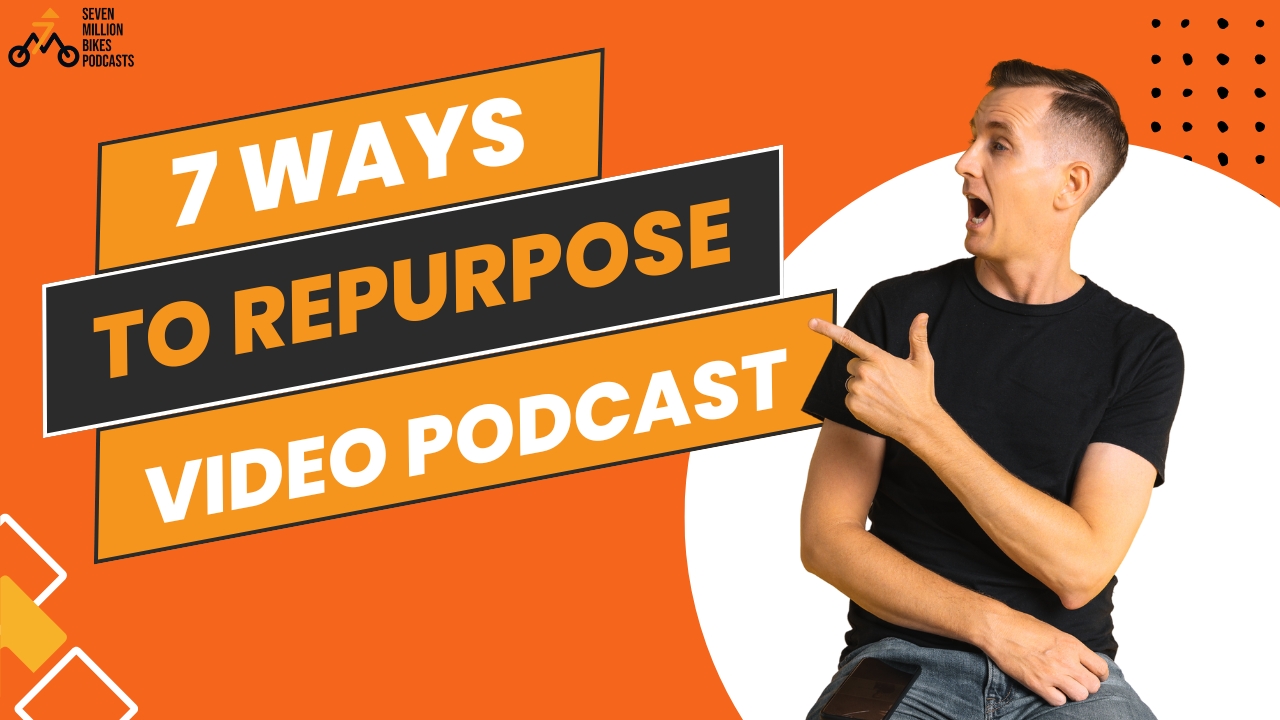For podcasters, especially those producing video podcasts, the content they create is a goldmine of marketing material. Learning how to repurpose podcast content is not only a cost-effective strategy but a time-saving one as well.
My name is Niall Mackay, founder of Seven Million Bikes Podcast. I am the host of Smarter Podcasting, where my guests and I share practical tips that help podcasters improve their shows. With years of experience, I now offer start-to-end services for producing and editing podcasts.
From my experience, I noticed that many podcasters stop at just posting the full video, missing out on the opportunity to extract more value from their hard work. However, it’s a waste of your content and resources.
By reformatting your content for various channels – social media clips, blog posts, or audiograms – you can engage with broader audiences while maximizing the return on the effort you’ve already invested.
Let’s discover 7 ways to repurpose your video content!

Table of Contents
What Is Repurposed Content?
Repurposing video podcast content involves taking your existing episodes and transforming them into different formats suited for a variety of platforms and audience preferences.
Instead of letting your video podcast live solely on YouTube or a website, repurposing allows you to reformat the content into smaller, digestible pieces that can reach new audiences.
This could mean extracting audio snippets, creating engaging social media clips, turning episodes into blog posts, or even transforming conversations into infographics or audiograms.
By adapting your video content for different platforms – such as Instagram, LinkedIn, or even newsletters – you maximize its potential. Each platform has its own audience type and content format, so repurposing lets you meet users where they are, whether they prefer to watch, listen, or read.
For instance, creating short video clips for TikTok or Instagram Stories caters to quick-consumption audiences, while transforming an episode into a blog post appeals to those who prefer in-depth, written content.
Why Should You Repurpose Your Video Podcast Content?
Repurposing your video podcast content can be a powerful strategy to increase your reach, save time, and improve your SEO. Here are some key reasons why it’s worth considering:
- Reach a Broader Audience
- Appeal to Diverse Learning Styles
Not everyone learns the same way. Some prefer visual content, while others prefer auditory or text-based information. By repurposing your podcast into different formats (e.g., blog posts, audio clips, infographics), you can cater to a wider range of learners and increase your audience.
- Expand Your Reach
Different platforms have different audiences. Repurposing your content for various platforms allows you to tap into new demographics and reach people who may not have discovered your podcast otherwise.
- Save Time and Resources
- Efficient Content Creation
Creating new content from scratch can be time-consuming and resource-intensive. Repurposing existing content allows you to leverage your previous work and create new assets more efficiently.
- Maximize ROI
This not only saves time but also increases the return on investment (ROI) for the time and resources spent on the original podcast episode. The more you repurpose, the more mileage you get out of every recording.

- Enhance SEO and Discoverability
- Improve Search Engine Rankings
Video podcasts, while engaging, aren’t always optimized for search engines. Repurposing your video content into text-based formats like blog posts, show notes, or transcripts significantly improves SEO (Search Engine Optimization). Search engines can’t “read” videos, but they can crawl text. By turning your podcast into written content, you increase your chances of being discovered by a larger audience via organic search.
- Increase Organic Traffic
Higher search engine rankings can lead to more organic traffic to your website, which can translate into increased audience engagement and conversions.
- Engage Audiences on Multiple Platforms
- Tailor Content for Each Platform:
Different social media platforms have different algorithms and audience preferences. By repurposing your content for specific platforms, you can optimize it for maximum engagement and reach.
- Stay Relevant:
Repurposing your content allows you to stay relevant and active on multiple platforms, which can help you build a stronger online presence and connect with your audience in new ways.
How To Repurpose Podcast Content – 7 Ways
Repurposing your video podcast content is an effective way to extend your reach, save time, and engage your audience across multiple platforms. Here are nine creative ways of How To Repurpose Podcast Content:
- Create Short Social Media Clips
Short Video
Short video clips are a powerful way to capture attention on social media platforms. By chopping your long podcast episodes into bite-sized clips of 30 to 90 seconds, you can give your audience quick, digestible insights without overwhelming them. These clips work particularly well on platforms like Instagram, TikTok, YouTube Shorts, or Facebook Reels, where shorter content tends to perform better.
Here’s how to do it effectively:
- Identify key moments: Watch your episodes and pinpoint the most interesting, funny, or informative segments. These could be compelling stories, expert insights, or memorable quotes.
- Keep it concise: Aim for clips that are 30 to 90 seconds long. This short attention span-friendly format is ideal for social media.
- Add captions: Remember to include captions, as many users scroll social media without sound. Include captions to make your clips accessible to a wider audience, including those who are deaf or hard of hearing. Captions can also help with SEO.
- Use engaging visuals: Add eye-catching visuals or graphics to your clips to make them more visually appealing.

Audiograms
Audiograms are another highly effective way to repurpose your podcast content for social media. These are short, animated videos that pair a podcast snippet with an eye-catching visual, such as a waveform animation, to create a multimedia experience.
Platforms like Instagram, Facebook, and Twitter are ideal for posting audiograms. Select engaging audio clips – perhaps a memorable quote or key insight – and convert them into an audiogram using tools like Headliner or Wavve. Audiograms not only increase engagement but also appeal to both audio and visual audiences, making your podcast content more dynamic and shareable across platforms.
- Turn Video Content into Blog Posts
Start by extracting key themes, discussion points, or expert opinions from your episodes. Organize these into a structured blog post that provides value and depth for readers. For example, you can take a guest interview and turn it into a Q&A-style blog post, or summarize the main takeaways from an episode into a detailed article.
Here are some tips:
- To optimize for SEO, use relevant keywords that reflect the main topics discussed in the podcast.
- Ensure your blog is easy to read by breaking content into subheadings, bullet points, and short paragraphs.
- Internal linking to related blog posts or other episodes can also improve your SEO rankings and increase your website’s discoverability.
That’s exactly what I’m doing with my podcasts – Smarter Podcasting and A Vietnam Podcast. For every episode I produce, I create a corresponding blog post that summarizes the key points and expands on the most valuable insights shared. This strategy not only helps boost traffic to my website but also allows me to reach a broader audience who prefer reading over watching or listening.

- Highlight Reels & Teasers
Highlight reels and teaser videos are excellent tools for promoting both past and upcoming episodes. By compiling the most impactful moments from several podcast episodes, you can create a promotional video that offers new viewers a quick introduction to your podcast.
These highlight reels can be shared on social media, YouTube, or even as paid ads to attract more listeners.
Similarly, teaser clips – 30 to 60-second previews, can build anticipation for future episodes. Use these snippets to showcase exciting guest appearances, major insights, or funny moments to entice your audience to tune in.

- Create Infographics & Visual Quotes
Infographics and visual quotes are an engaging way to present your podcast’s key points in a format that’s easily shareable across social media platforms. Turn compelling data or complex discussions from your podcast into visually appealing infographics. These are ideal for educational content or episodes where data or step-by-step processes are explained.
Likewise, visual quotes – highlighting impactful phrases or statements from your podcast – are perfect for platforms like Instagram, Twitter, and Pinterest.
- Identify key data or quotes: Choose data points or quotes that are particularly interesting or informative.
- Design the infographic: Use a design tool to create a visually appealing infographic that clearly conveys the information.
- Share on social media: Share your infographics and visual quotes on social media to reach a wider audience.
Make sure your infographics and quotes are branded with your podcast’s logo and color scheme to maintain consistency and boost brand recognition.
- Publish to YouTube with Timestamps
YouTube is an excellent platform for sharing your full video podcast episodes, but you can enhance the viewer experience by adding clickable timestamps in the video description. Timestamps allow users to jump to specific segments of the episode that interest them most, improving engagement and viewer retention.
Additionally, YouTube timestamps make your video more SEO-friendly, as they provide search engines with more data about the content of your video. This can improve your video’s chances of appearing in search results, ultimately increasing the visibility of your podcast on the world’s second-largest search engine.
- Repackage Content into e-Books, Guides, or Courses
For podcasters with deep industry knowledge, repurposing content into downloadable e-books, guides, or even online courses can be an excellent way to monetize your expertise. Take several episodes that cover a similar topic and combine them into a comprehensive guide or resource. For instance, a podcast series on digital marketing could be transformed into a detailed ebook on marketing strategies.
These resources can be offered as lead magnets – free downloads in exchange for email addresses – or as premium content. Similarly, podcasters can develop online courses or training programs based on their episodes, providing listeners with in-depth learning experiences that extend beyond the podcast format.
For example, I offer my audience and my clients the E-book of How To Convert Listeners to Loyal Buyers. Download for FREE now!
- Use Video Clips in Email Marketing
Email marketing remains one of the most effective tools for nurturing your podcast audience. By incorporating short video clips or teaser content into your email newsletters, you can boost engagement and drive more traffic to your podcast.
Include short, attention-grabbing clips that highlight key points or exciting moments from recent or upcoming episodes. Embedding videos directly into your emails can improve click-through rates and provide a more dynamic experience for your subscribers. Just ensure that the video format is supported by your email marketing platform or provide a clear link to the video for easy access.

Best Practices for Repurposing Video Podcast Content
To make the most of repurposing your video podcast content, following a few best practices can significantly enhance your strategy’s effectiveness.
Create a Repurposing Plan
Before you start repurposing, map out where and how you want to share your content across different platforms. Identify which episodes or segments would work best on specific channels, whether it’s social media, blogs, or email marketing. By having a clear plan, you can streamline the process and maximize your content’s reach.
Adapt Content for Platform Specifics
Each platform has its own style, audience preferences, and technical requirements. For instance, Instagram favors short, vertical videos, while YouTube and LinkedIn thrive on longer, more informative content. Tailor each piece of repurposed content to fit the specific platform’s format and user behavior for better engagement.
Consistency in Branding
No matter how you repurpose your content, maintaining a consistent brand voice and visual identity is key. From your podcast logo to color schemes and typography, ensure that your audience can instantly recognize your content, no matter where they see it. This builds brand familiarity and trust.
Test and Analyze Performance
As you start repurposing content, track the performance of each post or format. Look at engagement metrics like likes, shares, comments, and conversion rates. Use this data to refine your strategy and focus on the types of content that resonate most with your audience.
Stay Organized
Repurposing content efficiently requires organization. Use content calendars or project management tools to keep track of what’s been repurposed and where it’s being distributed. This will help you manage deadlines, ensure consistency, and avoid repetitive content across platforms.
Conclusion
Repurposing video podcast content is a highly effective and valuable strategy for any podcaster or content creator looking to maximize their reach. By adapting your original material for different platforms and formats, you’re not only saving time and resources but also ensuring that your content resonates with a broader and more diverse audience.
Instead of letting your hard work fade after a single release, you can continuously refresh and share your insights in new ways.
Want more podcasting advice? I Can Help You!
With my services, I can help you make your podcast dream come true. From recording, hosting, and especially editing, you can focus fully on producing quality content and leave the burden to my team.
Need More Support? Book a Free Consultation NOW!
Podcasters out there, if you have your podcast community with dedicated listeners, it’s time to turn them into loyal buyers! Let me help you with 5 secrets in my FREE E-book!
Don’t miss out on this opportunity to boost your podcast’s revenue.



1 thought on “How To Repurpose Podcast Content: 7 Strategies to Expand Your Audience”
Comments are closed.